What are real customers looking for? It seems like a straightforward question, but when you start digging into research and data, things get confusing.
You can frequently search for a word or phrase, but that fact alone does not mean that those are your customers.
When you also consider voice search and intent, it makes the entire keyword research process even more complicated.
While a paid search campaign will provide us with information about our “money” keywords, those that convert into customers and/or sales, there are also many other ways to find out what real customers are looking for.
As someone in the SEO trenches, I have a responsibility to drive traffic to my clients’ websites.
But that is not the only responsibility.
If you’ve been working with SEO for a minute, you already know the questions that come up:
- How does that traffic play into our ROI?
- Are these visitors converting?
In SEO, you still feel the burden of attracting visitors who will become leads, customers, or sales.
That’s where this in-depth keyword research process can help you.
Keyword Evolution
We are in an era where intent-based research is more important to us than pure volume.
As search engines strive to better understand the user, we must also be as informed about this, which means that we need to know a lot about our prospects and potential customers.
Additionally, we must consider voice search and how this growth will affect our traffic and ultimately conversions.
Most of us are already on this path, but if you are not or you want to improve your research skills, there are many tools and tactics that you can use.
Below are my tools and techniques that made the difference between average keyword research and specific keyword research that leads to interested web visitors.
1. Get to Know the Human(s) You’re Targeting
Knowing the target audience, I mean really knowing them, is something I’ve been preaching for years. You need to go one step further to learn what questions customers ask and how they describe their problems.
In marketing, we must focus on solving a problem. SEO is marketing. This means that our specific keywords and our focus on content must focus on that concept.
Audience analysis can help you get to know the humans you are targeting. This makes your keyword research more personal and relevant.
2. Go Beyond Traditional Keyword Tools
I love keyword research tools. There is no doubt that they simplify the process of finding great words and phrases, especially tools that provide suggested or related terms that help us build our lists.
Don’t forget the not-so-obvious tools.
Demographics Pro was developed to provide detailed information on the social media audience, which in turn provides insight into who may be searching for your brand or products.
You can see what they’re interests them and what they may be looking for.
It puts you on the right track to focus on the words your customers use versus the words your company believes people are using.
You can also view competitor and other brand information on Followerwonk, which provides a word cloud to show what users include in their biographies (i.e. keyword opportunities):

You can collect similar data about your leads using a free tool, Social Searcher.
It is not difficult to use. All you have to do is enter your keywords. You can also select the source and choose the type of post.
You can see recent posts, users, sentiment and even related words.
The following is an example of a Social Searcher report:
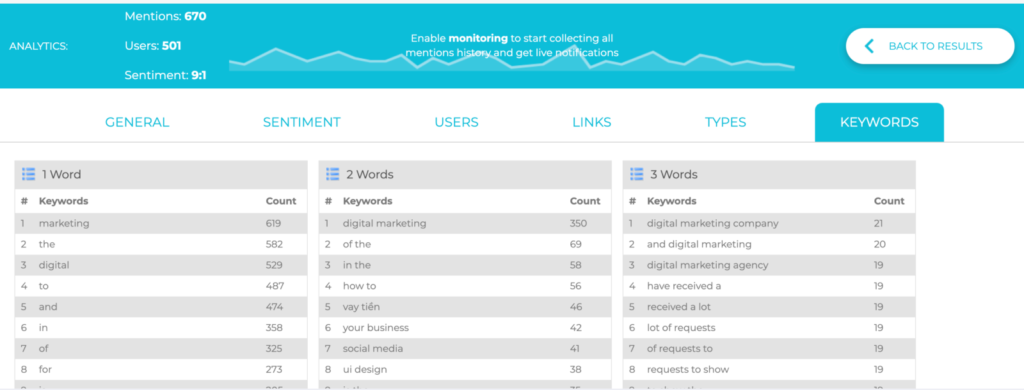
Pro tip: Let’s say you want to create and optimize videos for certain keywords.
This tool allows you to filter through YouTube so you can see what already exists and get an idea of how to optimize your videos.
Another great tool is Seed Keywords.
It is especially useful if you have difficulties with your keywords. This tool makes it possible to create a search scenario that you can send to your friends.
It is especially useful if you are in a niche industry and it is difficult to find keywords. After creating the search scenario, you get a link that you can send to people. The words they use to search are then collected and available to you.
3. Determine Trends
To capture relevant and timely traffic, you must identify popular keywords.
For example, if you are optimizing a website with seasonal products or services, you need to know what people are looking for and when.
During the COVID-19 pandemic, there were all kinds of keyword trends that went beyond obvious words and phrases.
As an example, people were looking for information to avoid weight gain and how to move a computer to a virtual environment.
Google Trends is the best source to find this information.
Be sure to filter by date and location, if applicable.
4. Dig into Intent
Once you understand some of the keywords that I want to target, it’s time to go one step further. I want to know what kind of content is ranked for these keywords, which gives me an idea of what Google and the researchers believe the intent to be.
To provide a simple example (there are many other types of intentions that occur during the buyer’s journey), let’s focus on two main categories of intent: buy and know.
How has the competitive landscape changed?
Find out if your competitors have secured their market positions in recent months.
Let’s say I’m targeting the term “organic coffee”:
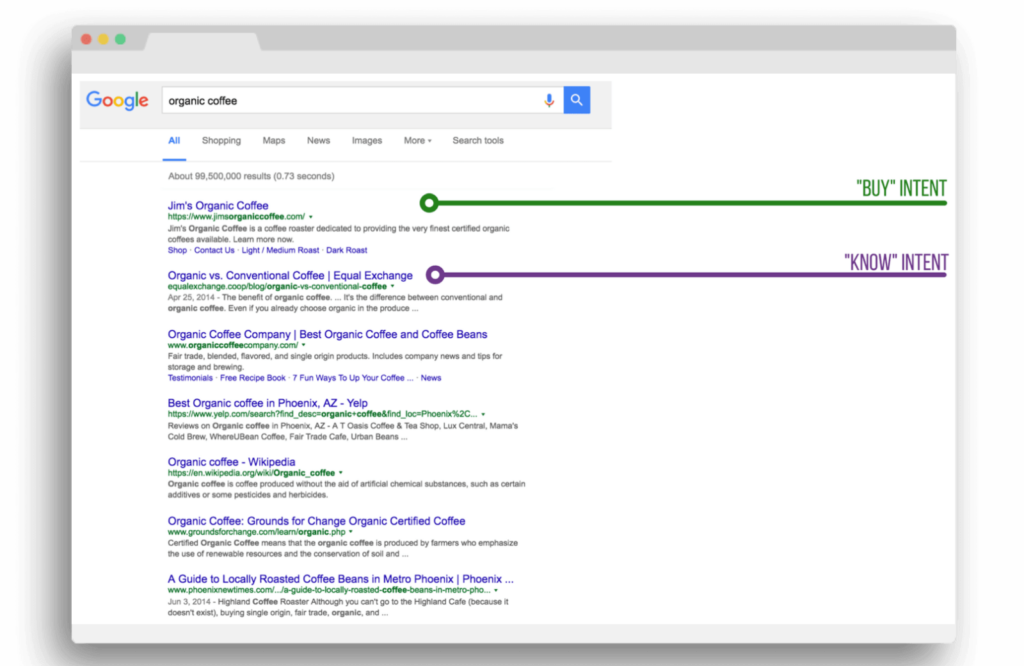
According to the results, Google believes that the researcher’s intent may be to buy or get more information about fair trade coffee.
In that case, the page I am trying to optimize can be targeted toward either intent.
Here is another example:
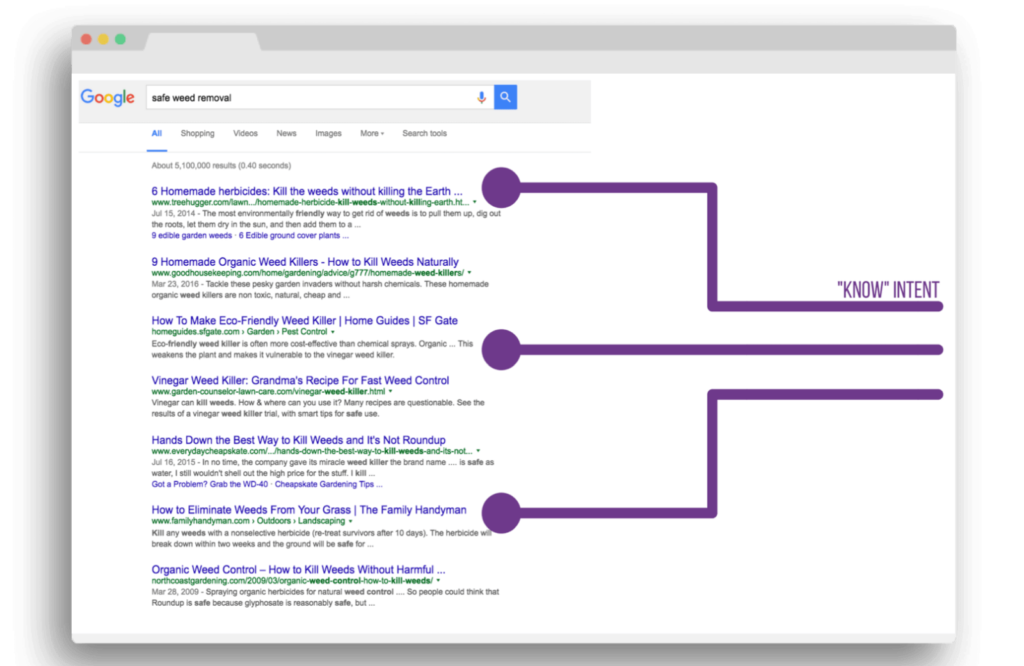
In this scenario, if you were to target the keyword “safe weeding”, you would create and/or optimize a page that provides information or, in other words, satisfies the “know” intent.
There are many tools that can help you determine which pages are ranked for your specific keywords, including SpyFu, SEMrush, and Ahrefs.
5. Go from Keywords to Questions
People search questions.
This is not new, but we must take every opportunity to answer these questions.
So never forget the long tail keyword.
Some of my favorite tools to help you find questions are:
AnswerThePublic uses automatic suggestion technology to present the common questions and phrases associated with your keywords
It generates a visualization of data that can help you get a better idea of the topics you are looking for.
With this tool, you get a list of questions, not to mention other data that is not described below:

BuzzSumo’s question analyzer finds the most popular questions on numerous forums and websites, including Amazon, Reddit, and Quora.
If I want to know what people are asking about “digital marketing”, I can get this information and sort by question type:
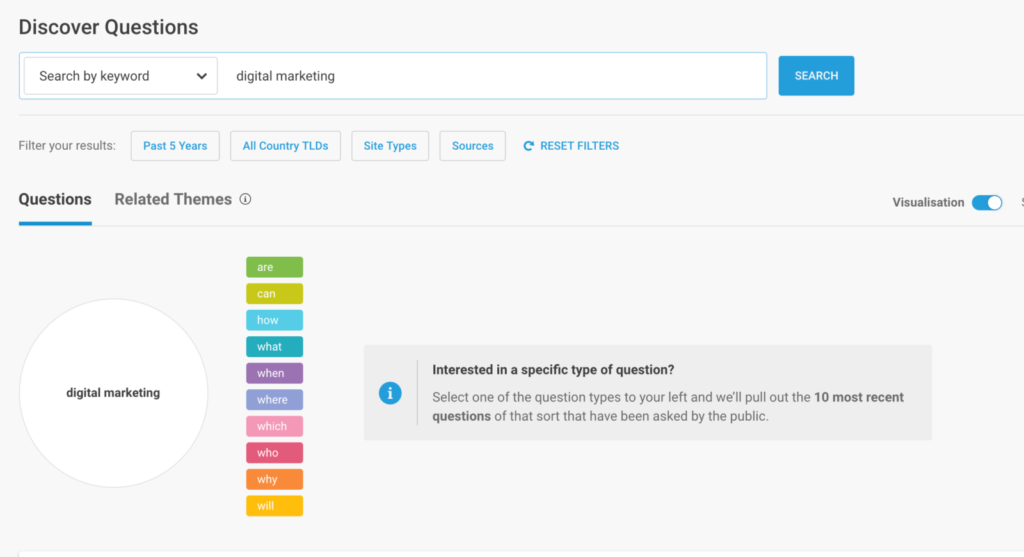
AlsoAsked.com is another tool that helps identify questions.
It is based on data from Google’s People People Ask.
The tool provides information on long-tail searches : the relationships between topics and questions.
Below is an example of what you can see at AlsoAsked.com.
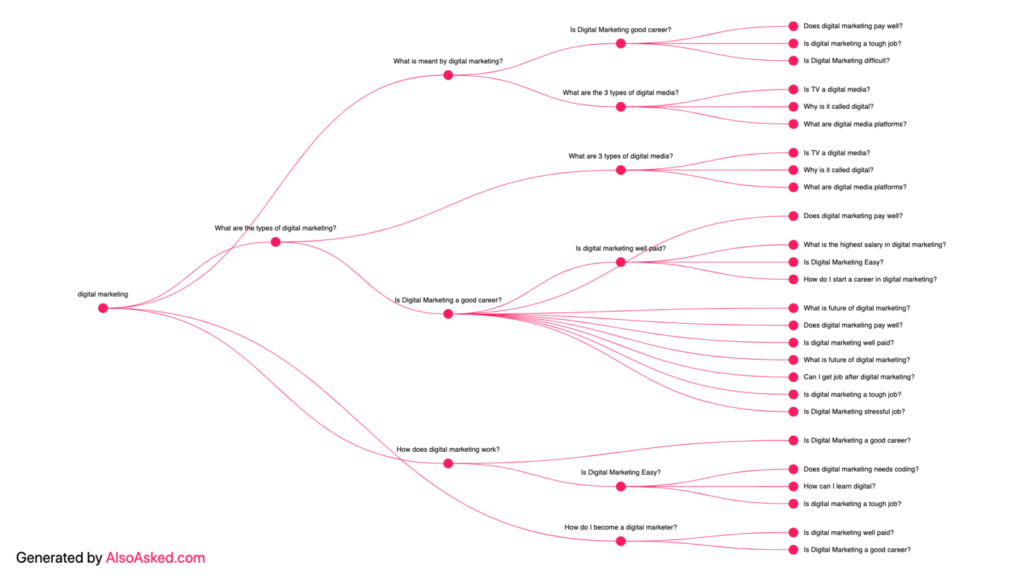
Conclusion
New techniques and tools always help facilitate our work.
Your main focus should be on how to attract customers to your website, which is done by knowing how to attract them with the right keywords, questions and content.
